Product Roadmap: An Ultimate Guide to Successful Planning and Implementation
-
 By Nchumbeni Yanthan
By Nchumbeni Yanthan - Published on Sep 27 2023

Table of Contents
- Introduction to Product Roadmaps
- The Importance of a Product Roadmap
- Types of Product Roadmaps
- Creating Your Product Roadmap
- Key Components of a Product Roadmap
- Roadmap Visualization Techniques
- Aligning Your Roadmap with Business Goals
- Common Roadmapping Challenges and Solutions
- Best Product Roadmap Tools to Use
- Teams Benefiting from Product Roadmaps
- Best Practices for Effective Roadmaps
- Presenting and Utilizing Your Roadmap
- Product Roadmap for Scrum Product Owners
- The Future of Product Roadmaps
- Key Takeaways
- Frequently Asked Questions
Introduction to Product Roadmaps
A clear plan is important in product development. Product roadmaps can be useful in this situation. They act as road maps for the process of making a product. A strategic document known as a product roadmap outlines the vision, objectives, and course of a product's development over time. It acts as a visual communication tool that aids teams and stakeholders in comprehending the direction and evolution of a product. Collaboration is simpler when everyone is aware of the product and why. We'll cover everything you need to know about product roadmaps in this guide, from their significance to best practices for creating and or using them successfully.
The Importance of a Product Roadmap
A well-crafted product roadmap plays a crucial role in an organization's success. It helps in:
Alignment: Ensuring that everyone is on the same page regarding the product's vision and goals.
Prioritization: Identifying and prioritizing features and improvements based on user needs and business objectives.
Transparency: Providing stakeholders, including customers, with a clear view of what to expect in the future.
Risk Mitigation: Identifying potential challenges and risks early in the development process.
Types of Product Roadmaps
Product roadmaps come in various types, each catering to different needs and audiences. Some common types include:
1) Strategy & Market Roadmap
A Strategy & Market roadmap sets the long-term course for a product by aligning it with overarching business objectives and market dynamics. This roadmap acts as a visionary guide, helping the company navigate the competitive landscape and seize growth opportunities over the next several years.
2) Visionary Roadmap
The Visionary roadmap offers a high-level perspective, presenting a sweeping vision of the product's future without diving into specifics. It serves as an inspirational compass, encouraging innovation and creativity within teams by providing a broad direction without rigid details.
3) Technology Roadmap
A Technology roadmap is all about the evolution of a product's technical aspects. It outlines how the product's underlying technology will advance to stay current and competitive in the market.
4) Technology Across Product Roadmap
The Technology across Product roadmap focuses on coordinating technological improvements that span multiple products or versions. It ensures that these shared technology components are developed and upgraded cohesively across the product portfolio.
5) Platform Roadmap
A Platform roadmap concentrates on building or enhancing a foundational platform that other products or features rely on. It lays the groundwork for future product development, ensuring a solid base for expansion.
6) Internal & External Product Roadmap
The Internal Product roadmap is for guiding internal teams. It contains details about features, timelines, and dependencies, facilitating team collaboration. The External Product roadmap is designed to communicate the company's product plans to external stakeholders, including customers, investors, and partners. It focuses on customer-facing features and expected release dates, providing transparency to external parties about the product's future direction.
Creating Your Product Roadmap
Creating an effective product roadmap involves these six key steps:
Define Clear Objectives: Start by setting specific goals for your product. Ensure these objectives align with your overall business strategy.
Gather Insights: Collect valuable information from customer feedback, market research, and team insights to inform your roadmap.
Prioritize Features: Evaluate and rank features or initiatives based on their impact, feasibility, and alignment with your goals.
Set Timelines: Assign realistic timelines to each feature, considering dependencies and resource availability.
Visualize the Roadmap: Use visualization techniques such as timelines, swimlanes, or color coding to create a clear, understandable roadmap.
Share and Adapt: Communicate the roadmap with stakeholders, gather feedback, and ensure alignment. Regularly update and adjust the roadmap as needed to stay on track and respond to changing priorities.
By following these streamlined steps, you can create a robust product roadmap process that guides your team toward achieving your product's objectives.
Key Components of a Product Roadmap
A typical product roadmap consists of:
- Title and Overview: A concise description of the product and its purpose.
- Themes or Initiatives: High-level categories of work.
- Features and User Stories: Detailed breakdown of what's planned.
- Timeline: Indication of when each item will be delivered.
- Dependencies: Any interdependencies between features.

Roadmap Visualization Techniques
Selecting the right visualization technique is essential for conveying your product roadmap effectively:
Timeline Charts: Show features and milestones chronologically for a clear sequence.
Swimlanes: Categorize features by teams or themes for clarity, ideal with multiple groups.
Gantt Charts: Detail tasks, timelines, and dependencies, best for complex projects.
Priority Matrices: Visualize feature importance using value versus effort for prioritization.
Color Coding: Use colors to indicate statuses, priorities, or categories for quick understanding.
Roadmap Themes: Organize around themes or objectives to highlight contributions to broader goals.
Flowcharts: Illustrate user journeys and dependencies in processes or interactions.
Table-Based Roadmaps: Efficiently present feature details like descriptions and statuses.
Interactive Options: Choose between static, read-only roadmaps for simplicity or interactive versions for exploration and adjustments.
Aligning Your Roadmap with Business Goals
Making sure that your product's plans are in line with what your organization wants to achieve to is what it implies to align your roadmap with business objectives. Start by having a clear understanding of your company's overall goal in order to achieve this. Break these large goals into smaller, practical steps that your product can contribute to.
It's crucial to ensure that the features and initiatives on your roadmap directly support these smaller goals. Regularly review and update your roadmap to keep it aligned with any changes in your company's objectives. Effective communication with all teams involved is vital, ensuring everyone understands how the product is contributing to the broader business goals.
In simple terms, aligning your roadmap with business goals means making sure your product plans are synchronized with your company's aspirations, and staying adaptable to any shifts in those goals.

Common Roadmapping Challenges and Solutions
Here are the common challenges and concise solutions in roadmapping:
Common Roadmapping Challenges
- Shifting priorities due to market changes.
- Limited resources can disrupt execution.
- Misunderstandings across teams.
- Setting unrealistic goals or features.
- Roadmaps becoming inflexible.
Solutions
- Regularly update the roadmap for shifting priorities.
- Efficiently allocate resources based on priorities.
- Use visuals and regular meetings for clarity.
- Set achievable goals and timelines.
- Embrace flexibility for better adaptability.
Best Product Roadmap Tools to Use
You can plan and visualize the development of your products using a number of excellent product roadmap tools. Some of the top ones are:
- ProductPlan
- Roadmunk
- Aha!
- Trello
- Jira
- Monday.com
- Asana
- Smartsheet
- Wrike
- Airfocus
These tools vary in terms of features, pricing, and user-friendliness, so it's a good idea to explore them further and choose the one that best fits your team's needs and preferences.
Teams Benefiting from Product Roadmaps
Product roadmaps benefit various teams, including:
Product Management Teams
Product managers use roadmaps as central planning tools. They gain a clear vision of the product's trajectory, enabling them to make informed decisions, prioritize features, and allocate resources effectively.
Development and Engineering Teams
For development and engineering teams, roadmaps provide a structured plan to follow. They understand the sequencing of tasks, dependencies, and the overall project timeline, ensuring efficient and coordinated work.
Design Teams: Designers can align their creative efforts with the product's goals. With a roadmap, they know what features or enhancements are on the horizon, allowing them to create user interfaces and experiences that complement the overall vision.
Marketing and Sales Teams
Roadmaps offer valuable insights into upcoming product releases and key features. This information empowers marketing and sales teams to prepare their strategies, generate excitement, and engage with customers effectively.
Customer Support and Service Teams
Having visibility into the roadmap helps customer support and service teams anticipate changes and upcoming features. This allows them to proactively prepare for customer inquiries, provide better assistance, and enhance user satisfaction.
Executive Leadership
Company leaders gain a strategic overview of the product's direction through roadmaps. This enables them to align product development with broader business objectives and make informed decisions regarding resource allocation and investments.
External Stakeholders
Customers, investors, and partners also benefit from product roadmaps. They gain transparency into a product's future, which fosters trust, manages expectations, and encourages collaboration.
In essence, product roadmaps serve as a unifying tool, ensuring that all teams, both internal and external, are on the same page regarding the product's development journey. This alignment contributes to smoother operations, improved collaboration, and ultimately, the achievement of product and business goals.
Best Practices for Effective Roadmaps
To create and maintain effective roadmaps:
- Include input from product managers, developers, and executives.
- Avoid overcomplicating your roadmap.
- Prioritize both immediate and future needs.
- Keep your roadmap current to reflect changes in priorities.
Presenting and Utilizing Your Roadmap
Presenting and utilizing your best product roadmap effectively is crucial. After creating it, clear communication to stakeholders and its practical application are vital. Tailor your message when presenting it based on your audience, offering detailed features and timelines for internal teams and a higher-level overview for external stakeholders. Visual aids, like charts and graphics, enhance comprehension.
To utilize your roadmap, regularly reference it in planning meetings and reviews. Ensure it aligns with your product's current status and market conditions, using it to adapt to changes. The roadmap should guide resource allocation, prioritizing essential tasks. Keep in mind that your roadmap is a dynamic document; revisit and refine it regularly as your product evolves and new insights emerge. In summary, effective presentation and utilization of your roadmap align efforts and resources toward achieving your product's goals.
Product Roadmap for Scrum Product Owners
A Scrum product roadmap prioritizes sprint planning and short-term goals, and it frequently spans a period of several months to a year. It prioritizes features based on customer feedback, market insights, and business objectives, ensuring that the Scrum team works on high-value items in each sprint.
This prioritization is driven by customer feedback, market insights, and business objectives, ensuring that the Scrum team dedicates their efforts to high-value items during each sprint. Collaboration between the product owner and the development team is essential as they work together to refine and groom the backlog.
This iterative process allows for adjustments to accommodate changing priorities or emerging requirements. For Scrum Product Owners, having knowledge for a product roadmap is a vital tool. This understanding fits in perfectly with Sprintzeal's CSPO Certification Training Program, which provides Product Owners with crucial knowledge and skills to succeed in their positions.
The Future of Product Roadmaps
The future of product roadmaps holds exciting possibilities as technology and methodologies continue to evolve. We can anticipate several trends and developments shaping the way roadmaps are created and used.
Firstly, artificial intelligence and data analytics will play a more prominent role in roadmap planning, helping teams make data-driven decisions and predict market trends.
Secondly, the integration of roadmaps with agile and lean development methodologies will become even more seamless, allowing for quicker responses to changing requirements. Thirdly, the emphasis on user-centric design will lead to roadmaps that prioritize customer feedback and needs, resulting in more user-friendly and market-responsive products.
Additionally, the rise of remote work will demand improved collaboration and visualization tools within roadmaps. Finally, environmental sustainability concerns may lead to roadmaps that consider the ecological impact of product development.
In essence, the future of product roadmaps lies in their adaptability, responsiveness, and integration with evolving technologies and market dynamics, all aimed at delivering products that better meet customer needs while minimizing environmental impact.
Key Takeaways
In conclusion, the foundation of successful product management is a product roadmap. They act as dynamic leaders who help teams align, set priorities, promote transparency, and manage risks. Understanding different types of roadmaps and how to create them is key for successful product development. It's important to align your roadmap with your company's overall business goals to ensure your product contributes significantly to the company's success. Maintaining clear and open communication, both internally and externally, is crucial for transparency and gaining support from all parties involved.
The process of creating a roadmap requires using the proper tools flexible being in response to changing circumstances. Adopting these guidelines will help you move through the product development process with purpose and clarity.
Start your journey towards becoming a Product owner today and discover the exciting possibilities in the world of product management.
Our comprehensive courses caters to everyone, whether you're just starting or have some experience. Reach out to our course expert if you need help or have questions. Subscribe to our newsletter for valuable tips and insights, helping you excel in product management.
Frequently Asked Questions
How often should I update my product roadmap?
Regular updates are essential, especially when priorities change or new information becomes available. Monthly or quarterly updates are common.
What is the difference between a product roadmap and a project plan?
A product roadmap outlines the long-term vision and direction of a product, while a project plan focuses on the specific tasks and timelines required to complete a project.
Can I use a product roadmap for non-software products?
Yes. Product roadmaps can be used for any product or project where long-term planning and communication are needed.
How can I handle scope changes in my product roadmap?
Scope changes are common. Be prepared to re-prioritize and adjust to accommodate new requirements or insights.
Subscribe to our Newsletters
Popular Programs
PSM® - Professional Scrum Master Certification
Live Virtual Training
- 4.9 (75 + Ratings)
- 32k + Learners
Trending Posts
Data Processing - A Beginner's Guide
Last updated on Aug 18 2022
Business Agility Guide - Importance, Benefits and Tips
Last updated on Jun 22 2023
DevOps Engineer - Career path, Job scope, and Certifications
Last updated on Aug 9 2024
Agile Project Management Explained
Last updated on Mar 20 2023
Top Git Interview Questions and Answers [Updated 2024]
Last updated on Oct 7 2022
Scrum vs Safe – Differences Explained
Last updated on Jul 26 2022
Categories
- Agile Management 54
- AI and Machine Learning 42
- Big Data 53
- Business Management 51
- Cloud Computing 44
- Digital Marketing 56
- Information Security 8
- IT Hardware and Networking 17
- IT Security 103
- IT Service Management 29
- Leadership and Management 1
- Microsoft Program 2
- Other 43
- Programming Language 31
- Project Management 162
- Quality Management 75
- Risk Management 8
- Workplace Skill Building 2
Trending Now
List Of Traits An Effective Agile Scrum Master Must Possess
ArticleDevOps Vs Agile Differences Explained
ArticleDevops Tools Usage, and Benefits of Development Operations & VSTS
ArticleAgile Scrum Methodology - Benefits, Framework and Activities Explained
ArticleGuide to Agile Project Management 2024
Article10 best practices for effective DevOps in 2024
ArticleGuide to Becoming a Certified Scrum Master in 2024
ArticleWhy Should You Consider Getting a Scrum Master Certification?
ArticleCSM vs CSPO: Which Certification is Right for You?
ArticleAgile Manifesto - Principles, Values and Benefits
ArticleAgile Methodology Explained in Detail
ArticleAgile Project Management Explained
ArticleEssential Tools for Agile Project Management 2024
ArticleEverything about Scrum Methodology
ArticleScrum Workflow - A Step by Step Guide
ArticleLatest Agile Interview Questions and Answers To Look For In 2024
ArticleScrum Interview Questions and Answers 2024
ArticleTop Scrum Master Responsibilities 2024 (Updated)
ArticleProduct Life Cycle in Marketing: Essential Strategies for Product’s Success
ArticleDevOps Engineer Interview Questions - Best of 2024
ArticleDevOps Engineer - Career path, Job scope, and Certifications
ArticleBusiness Agility Guide - Importance, Benefits and Tips
ArticleScrum vs Safe – Differences Explained
ArticleCSM vs. PSM - Which Scrum Certification is Better?
ArticleSAFe Implementation Roadmap Guide
ArticleAgile Release Plan Guide
ArticleAgile Environment Guide
ArticleAgile Coaching Guide - Best Skills for Agile Coaches
ArticleAgile Principles Guide
ArticleSAFe Certifications List - Best of 2024
ArticleAgile Prioritization Techniques Explained
ArticleScrum Ceremonies Guide
ArticleProduct Owner Certifications List
ArticleScrum of Scrums Guide
ArticleWhat is DevSecOps and its Importance
ArticleData Processing - A Beginner's Guide
ArticleDevOps Career Guide 2024
ArticleStakeholder Engagement Levels Guide
ArticleScrum Master Career Path Explained
ArticleScrum Career Path Explained
ArticleTop Git Interview Questions and Answers [Updated 2024]
ArticleA guide to Agility in cloud computing
ebookDMAIC Methodology - The Ultimate Guide
ArticleProduct Life Cycle Strategies: Key to Maximizing Product Efficiency
ArticleScrum Master Salary Trends in 2024
ArticleProduct Life Cycle Model: A Guide to Understanding Your Product's Success
ArticleWhat is a Product Owner - Role, Objectives and Importance Explained
ArticleSuccessful Product Strategies for Introduction Stage of Product Life Cycle
ArticleUnlocking Career Opportunities in Product Management: Your Roadmap to Success
ArticleSaturation Stage of Product Life Cycle: Complete Guide
ArticleCutting-Edge Technology of Google Cloud
ArticleHow to Write an Executive Summary for a Business Plan?
ArticleImportance of Procurement Management Software in Modern Business
Article

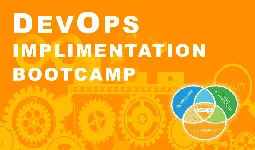
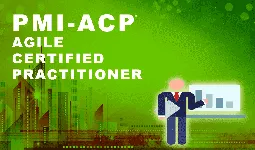

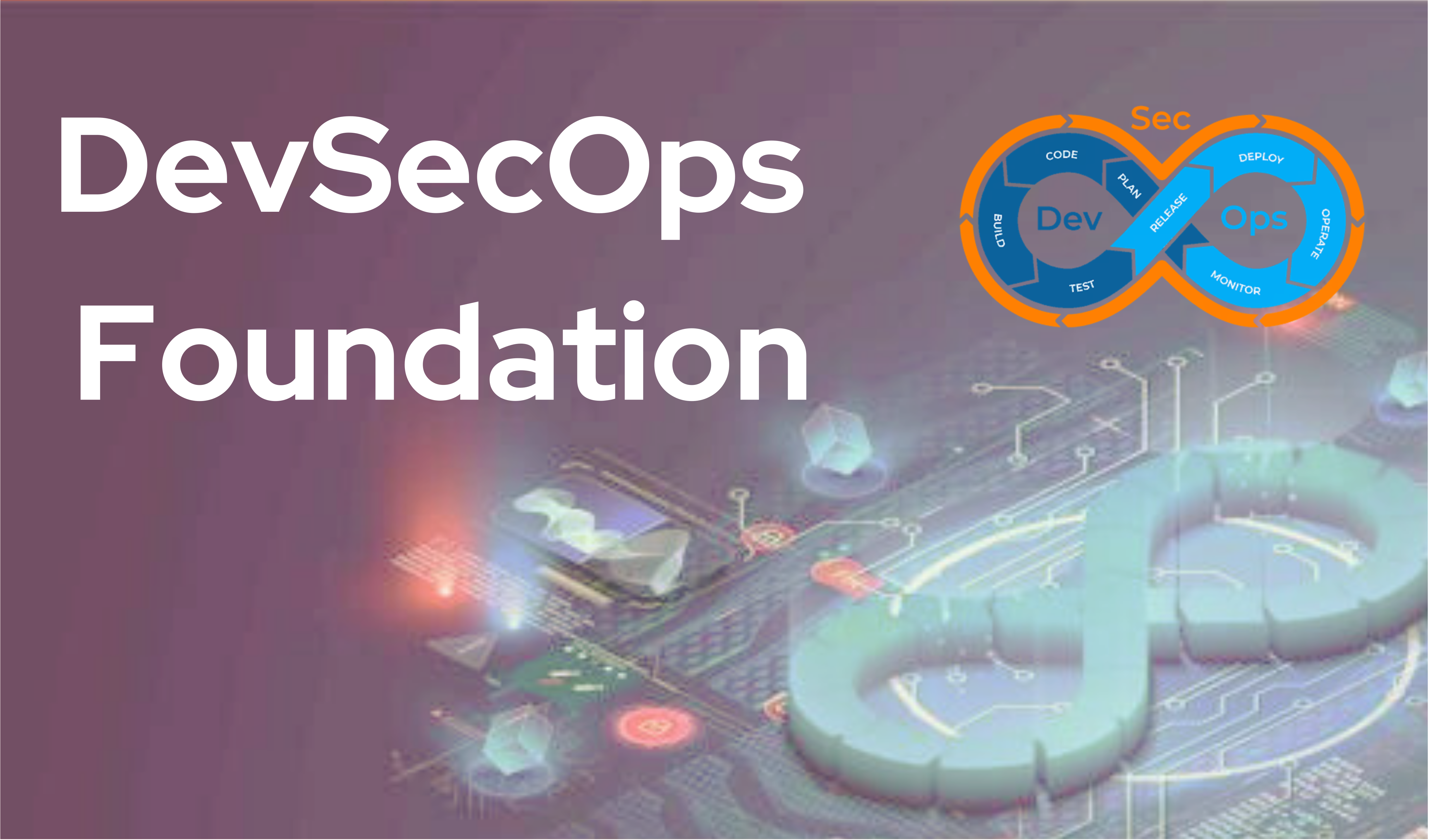

.webp)
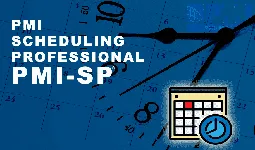
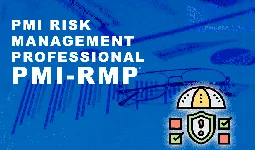







![Top Git Interview Questions and Answers [Updated 2024] Top Git Interview Questions and Answers [Updated 2024]](https://d2ds8yldqp7gxv.cloudfront.net/Blog+Images/416.webp)
